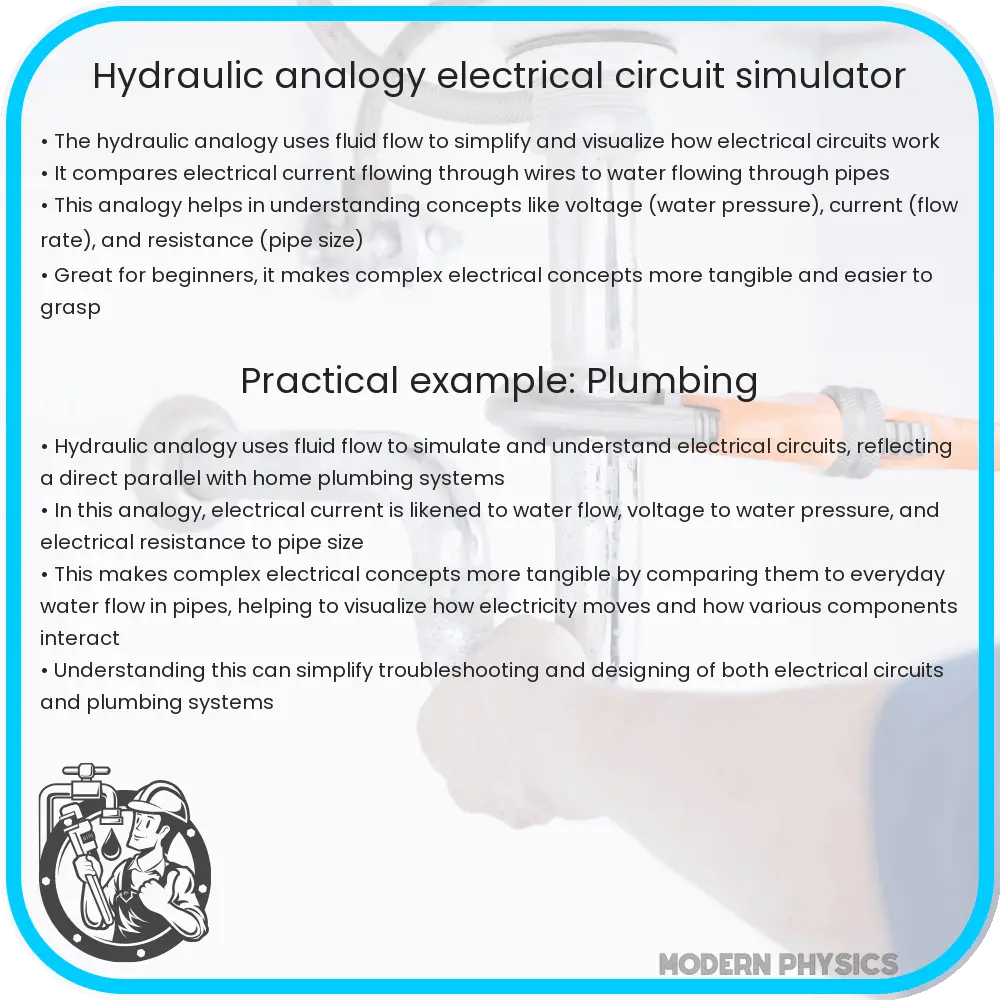Explore the Hydraulic Analogy Simulator’s features, educational benefits, and applications in STEM, research, and industry for dynamic learning.

Exploring the Hydraulic Analogy Simulator: A Cutting-Edge Tool for Educational Insights
The world of education is continuously evolving, with new technologies and methodologies emerging to enhance learning experiences. A prime example of this innovation is the Hydraulic Analogy Simulator, a state-of-the-art tool designed to bridge the gap between abstract concepts and tangible understanding in fields like physics, engineering, and fluid dynamics. This article delves into the features, applications, and educational benefits of this dynamic simulator.
Accurate Simulation of Fluid Dynamics
At its core, the Hydraulic Analogy Simulator excels in accurately mimicking the behavior of fluids under various conditions. By leveraging advanced algorithms and realistic physics models, it provides an interactive platform where users can experiment with different scenarios. Whether it’s understanding the principles of fluid flow in pipes or exploring the impact of pressure and temperature changes on fluid behavior, the simulator offers a hands-on approach to learning that is both engaging and informative.
Dynamic and Interactive Learning Experience
One of the key strengths of the Hydraulic Analogy Simulator is its dynamic nature. Users can modify parameters in real-time and immediately observe the effects on the system. This interactive component not only makes learning more engaging but also helps in developing a deeper understanding of the concepts at hand. For instance, students can alter the flow rate or introduce obstacles within the fluid path to study turbulence and its consequences, thereby gaining practical insights into complex fluid dynamics phenomena.
Educational Value in Varied Disciplines
The versatility of the Hydraulic Analogy Simulator extends beyond traditional physics and engineering disciplines. It serves as a valuable educational resource in areas such as environmental science, where understanding water flow and its management is crucial. Moreover, the simulator can be integrated into chemistry education, especially in topics like solution dynamics and reaction kinetics, where the movement and interaction of particles are key factors.
Teachers and educators can leverage the simulator to illustrate concepts that are often challenging to convey through conventional teaching methods. By providing a visual and interactive representation of fluid behavior, it aids in demystifying abstract theories and principles, making them more accessible to students.
Customization and Adaptability
Another significant aspect of the Hydraulic Analogy Simulator is its customization capabilities. Educators can tailor the simulation settings to suit specific curriculum requirements or difficulty levels. This adaptability ensures that the tool remains relevant and effective across various educational stages, from high school to higher education. Additionally, the simulator’s ability to model real-world scenarios makes it an invaluable asset for practical applications in research and industry-oriented projects.
Enhancing Research and Industry Applications
The Hydraulic Analogy Simulator is not just limited to educational settings. Its precise simulation capabilities make it an invaluable tool for research and industry applications. Professionals in fields such as civil engineering, environmental management, and hydraulic systems can use the simulator for designing, testing, and optimizing real-world systems. For instance, urban planners can simulate water flow in city drainage systems to improve flood management strategies, while engineers can use it to design more efficient and sustainable water distribution networks.
Interactive User Interface and Accessibility
The simulator boasts an intuitive user interface, making it accessible to a wide range of users, from students to professionals. This ease of use ensures that users can focus on the learning and application aspects without being hindered by complex software navigation. Additionally, the simulator’s compatibility with various devices and platforms enhances its accessibility, allowing users to engage with it in classrooms, laboratories, or remotely.
Supporting STEM Education
As a powerful educational tool, the Hydraulic Analogy Simulator plays a significant role in supporting STEM (Science, Technology, Engineering, and Mathematics) education. By providing a practical and visual approach to learning, it helps in cultivating interest and proficiency in STEM fields among students. This is particularly important in an era where the demand for skilled professionals in these areas is continually growing.
Future Developments and Updates
Looking ahead, the continued development and enhancement of the Hydraulic Analogy Simulator promise even greater educational and practical benefits. Upcoming updates may include more advanced simulation features, integration with virtual and augmented reality for a more immersive experience, and expanded educational resources. These advancements will further solidify the simulator as an indispensable tool in both educational and professional realms.
Conclusion
In conclusion, the Hydraulic Analogy Simulator represents a remarkable convergence of technology and education. Its accurate simulation of fluid dynamics, interactive learning experience, and adaptability across various disciplines make it a revolutionary tool in enhancing understanding and application of complex concepts. As an asset to both educational institutions and industry professionals, it stands as a testament to the potential of technology in transforming learning and practical applications. The ongoing evolution of this tool will undoubtedly continue to offer valuable contributions to the fields of education, research, and industry, paving the way for a more informed and skilled generation of professionals and academics.
